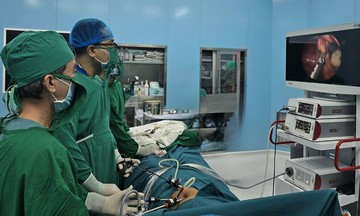Besides diet, regular exercise is an effective natural method to improve liver health. Exercise helps reduce liver fat, improve insulin sensitivity, and leads to better metabolic health outcomes.
Here are 5 simple exercises that can improve fatty liver:
Brisk walking
Brisk walking is a great exercise that people with fatty liver should do for at least 150 minutes per week at a moderate intensity to reduce inflammation, an essential factor in managing the disease. This exercise requires no equipment and can be done anywhere to improve liver function.
Walking helps fatty liver patients improve insulin resistance, making it suitable for long-term practice.
People should brisk walk for 30 to 45 minutes, 3 to 5 times a week to feel a noticeable improvement.
High-intensity interval training (HIIT)
High-intensity interval training (HIIT) involves short bursts of maximum-intensity exercise alternating with brief recovery periods.
Research shows that this training method effectively burns liver fat while also improving cardiovascular health.
Fatty liver patients performing HIIT exercises, including cycling, running, or weight training for 20 to 30 minutes, three times a week, will significantly reduce liver fat.
The combination of HIIT with improved insulin sensitivity and liver mitochondrial function helps with detoxification and better fat metabolism.
A modified HIIT workout with five cycles will bring beneficial effects to liver health.
 |
People exercising along the Han River, Da Nang, 5/2024. Photo: Nguyen Dong |
Strength training
Strength or resistance training through weightlifting or bodyweight exercises is an effective way to enhance fatty liver disease management.
Muscle development increases resting metabolic rate, allowing the body to burn more calories daily, including fat stored in the liver. Regular strength training sessions twice a week help fatty liver patients by enhancing glucose processing and reducing liver swelling.
People can perform squats, lunges, push-ups, and weightlifting at home or at the gym as part of their workout routine. Strength training combines well with aerobic exercises for a comprehensive workout plan that benefits liver health.
Swimming
Swimming is a gentle yet powerful exercise that benefits liver health due to its ability to engage various muscle groups while providing an excellent cardiovascular workout.
Swimming is a low-impact exercise, suitable for those with joint problems or who want to avoid strenuous physical activity. The continuous swimming motion increases heart rate, promoting fat breakdown and improving insulin sensitivity, thus helping control fatty liver disease.
Swimming sessions lasting 30 to 45 minutes, performed 3 to 5 times a week, will help reduce liver fat while improving physical fitness.
Yoga
Yoga is an essential exercise for improving liver health through stress reduction and mindfulness. The combination of Triangle, Cobra, and Bow poses in yoga practice stimulates liver function and improves blood circulation to the abdominal organs, supporting detoxification and fat reduction.
Yoga practice enhances flexibility while building core strength, which helps maintain metabolic health.
Regular yoga practice, 30 minutes per session, 3 to 4 times a week, helps fatty liver patients balance physical and mental health.
My Y (According to Times of India)












